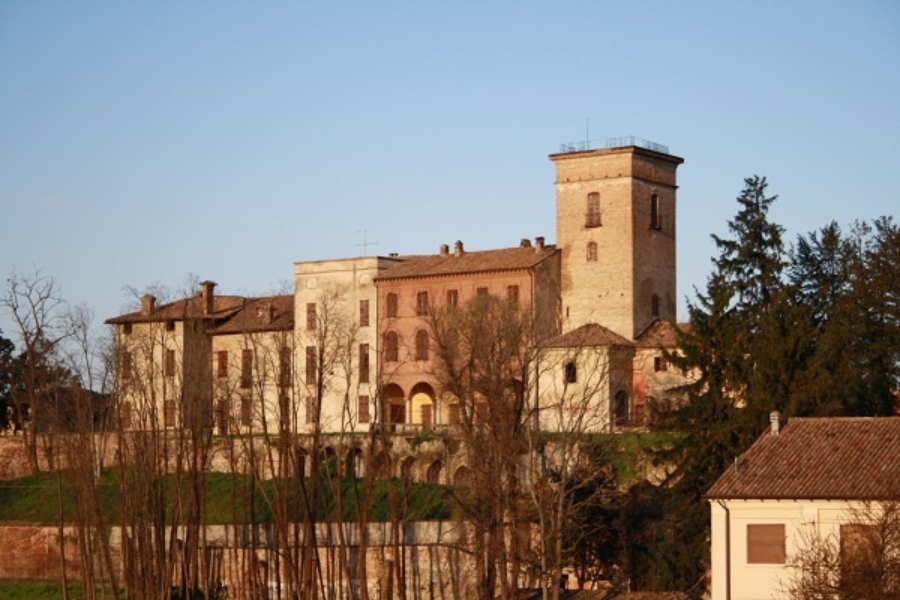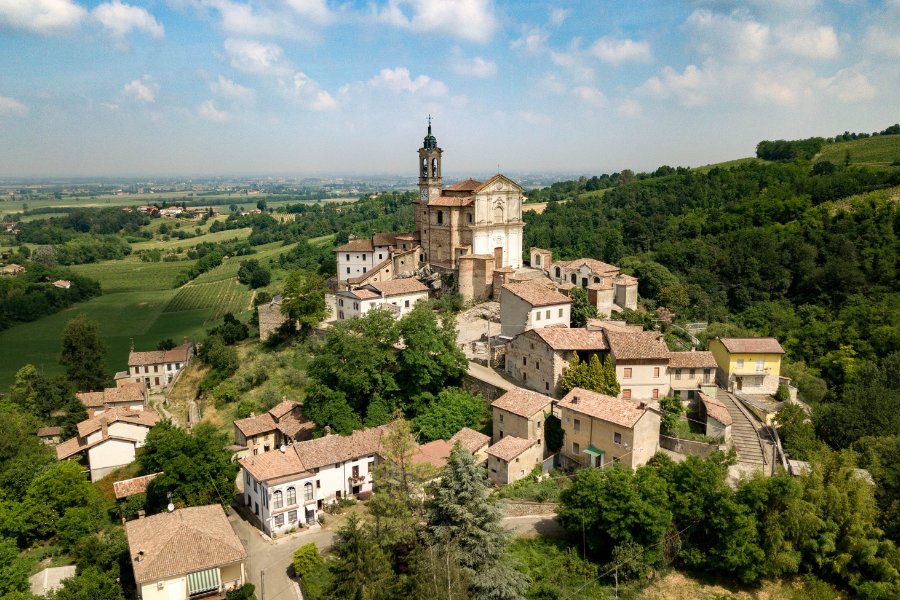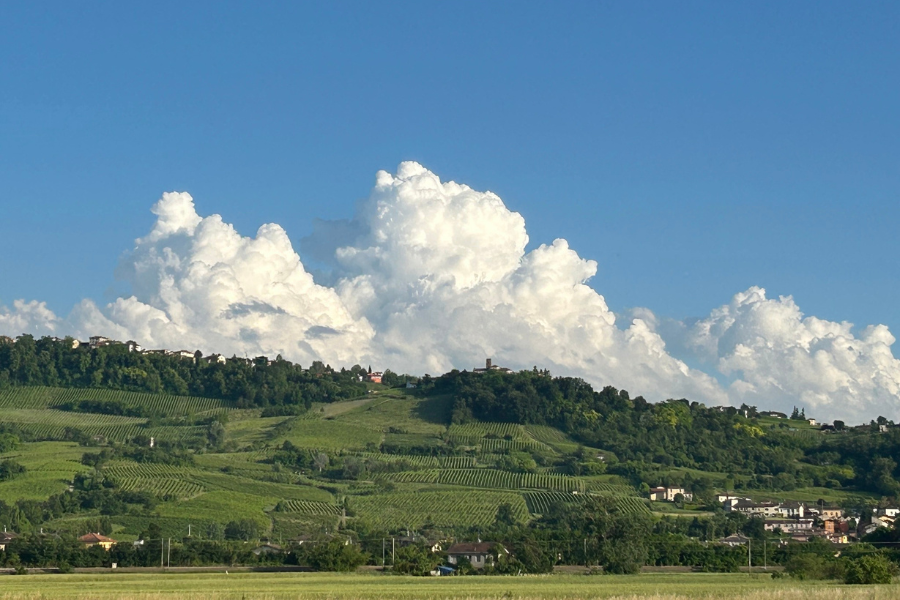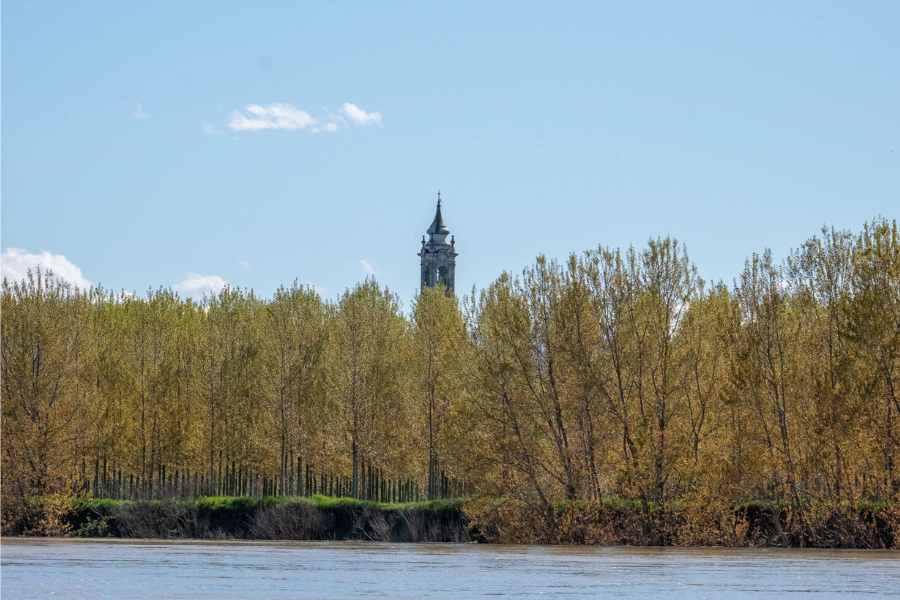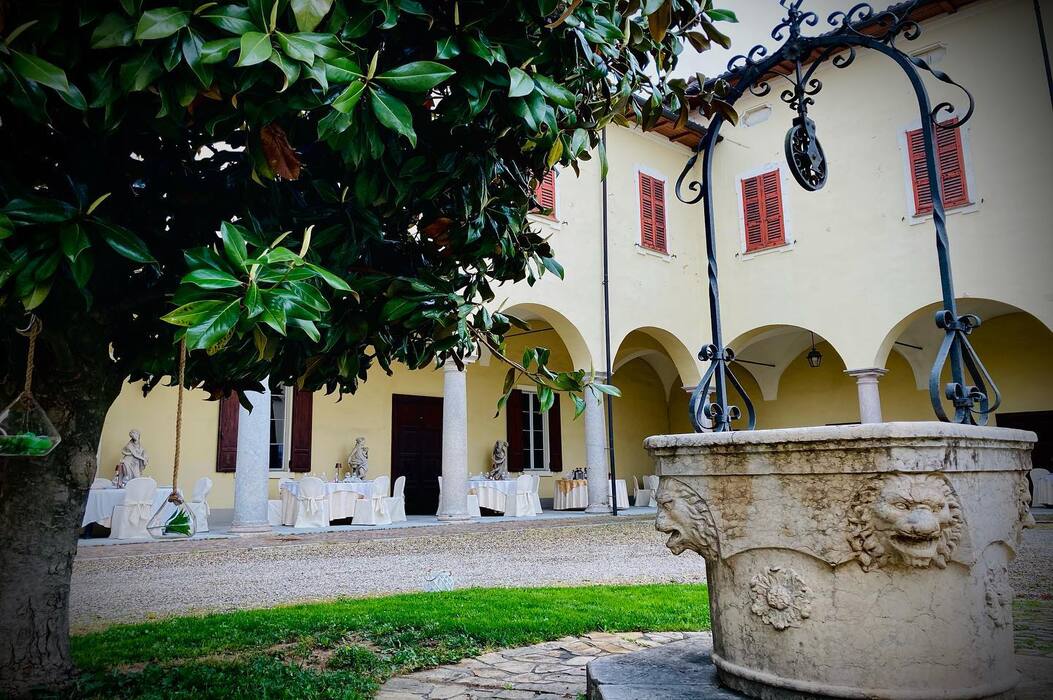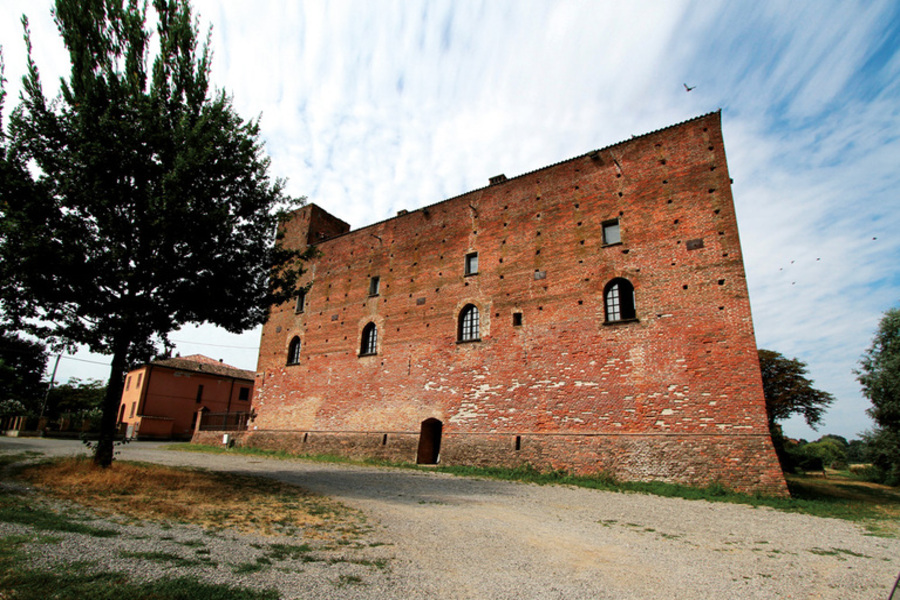Oliva Gessi, from millenary olive trees to white chalk
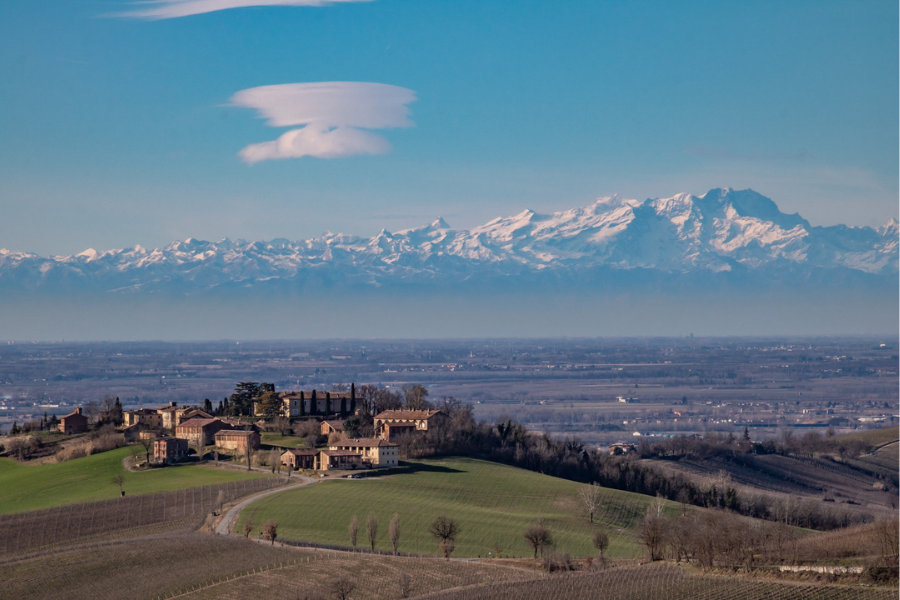
Nestled in the hills that separate Casteggio from Montalto Pavese, Oliva Gessi is one of the smallest municipalities in the province of Pavia, with less than 180 inhabitants, yet it encompasses an extraordinary heritage: limestone soils that were formed millions of years ago, medieval stories, quality wines and the ever-living memory of St. Louis Versiglia, missionary and martyr.
Cover image taken from the Oliva Gessi Municipality Facebook page
Oliva Gessi –a name that encapsulates the essence of the village
The origin of the village dates back to before the year 1000, when Otto I gave it to his daughter-in-law Theophanus and later to the monks of Santa Maria delle Cacce.
🌳The first part of the name, Oliva, perhaps derives from a thousand-year-old olive tree or, from Saint Oliva the martyr (portrayed in a chapel in the castle).
The second part, Chalks, was added in 1865 in reference to the ancient chalk deposits, once exploited for agricultural and craft purposes.
A great little theatre
🎭 In the centre of the village is the town hall square, which is also overlooked by the Maurizio Defilippi Parish Theatre (1926), a small jewel with 90 seats, one of the largest in Europe in relation to its population. The ‘G74’ dialect company has been performing here since 1974.
Sacred art in Oliva Gessi
⛪ Next to the theatre stands the parish church of San Martino Vescovo, documented as early as 1185. Rebuilt in 1682, it houses:
- a 17th-century statue of Our Lady of the Belt
- three 18th-century frescoes
- a baptismal font on a column from the Roman period
On the parvis stands the Ascent of the Martyrs, a commemorative staircase dedicated to St Louis Versiglia and Callistus Caravario, canonised in 2000 by Pope John Paul II.
Every year, on the Sunday closest to 3 May, the ancient procession of the Crocette is celebrated.
During the rite, small crosses are blessed and placed at the corners of the castle: a gesture of popular devotion to invoke protection from calamities.
The museum house of St Louis Versiglia
Born in Oliva Gessi in 1873, Louis Versiglia was a Salesian bishop and missionary. Inspired by Don Bosco, he was martyred in China in 1930 and canonised seventy years later.
His birth house, now a museum, houses personal objects, letters, photographs and documents related to his life and mission.
The marble plaque and bronze medallion on the façade recall the rigour of his spiritual journey.
The Castle of Oliva Gessi
🏰 In a dominant position is the Castle of Oliva Gessi.
The fortification was converted into a noble residence by the Isimbardi family in the 19th century, but it is of much earlier origin (10th century).
It is a four-sided block that stands at the highest point of the small settlement. It has a central courtyard, a large driveway and a large terrace.
Also noteworthy is the frescoed aristocratic chapel (late 17th – early 18th century), with an altarpiece depicting the Black Madonna of Oropa and a small oval dedicated to Saint Oliva.
As it is now a proven property, it cannot be visited except in the case of cultural events, such as visits organised during FAI Days.
A Roman treasure hidden in plaster
🏺 In 1972, a hoard of 561 Roman coins in excellent condition, dating from the period 294-303 AD, was discovered at Le Cagliere. The coins, kept in a bronze bottle(Blechkanne), are now on display at the MAC, the Archaeological Museum of Casteggio and the Oltrepò Pavese.

Nature and architecture: the Corte dei Gelsi and the vineyards in the chalk
Architecturally speaking, Oliva Gessi still retains the model of the large Lombardy farmstead: a true symbol of the rural tradition of the Po Valley that usually consists of a central courtyard (the farmyard) surrounded by stables, barns, haylofts and the farmers’ dwellings.
The splendid 18th-century Corte dei Gelsi is a perfect example of rural architecture, with ornate barns and fretwork openings.
The municipality of Oliva Gessi has a limestone subsoil that dates back to the Miocene. The Riesling vine has found a home here.
In fact, it extends into the famous area known as the Riesling Valley.
From its chalky soils, the Oliva Estate at Corte dei Gelsi produces the Oliva Riesling.
Both Cantina Monsupello and Cantina Ca’ di Frara have vineyards in the municipality of Oliva Gessi, from which their respective Riesling production comes.
The village of Oliva Gessi, amid ancient buildings and rows of vines, is a treat for those who like to immerse themselves in geological memory and vineyards.

 Save your favorite events
Save your favorite events




